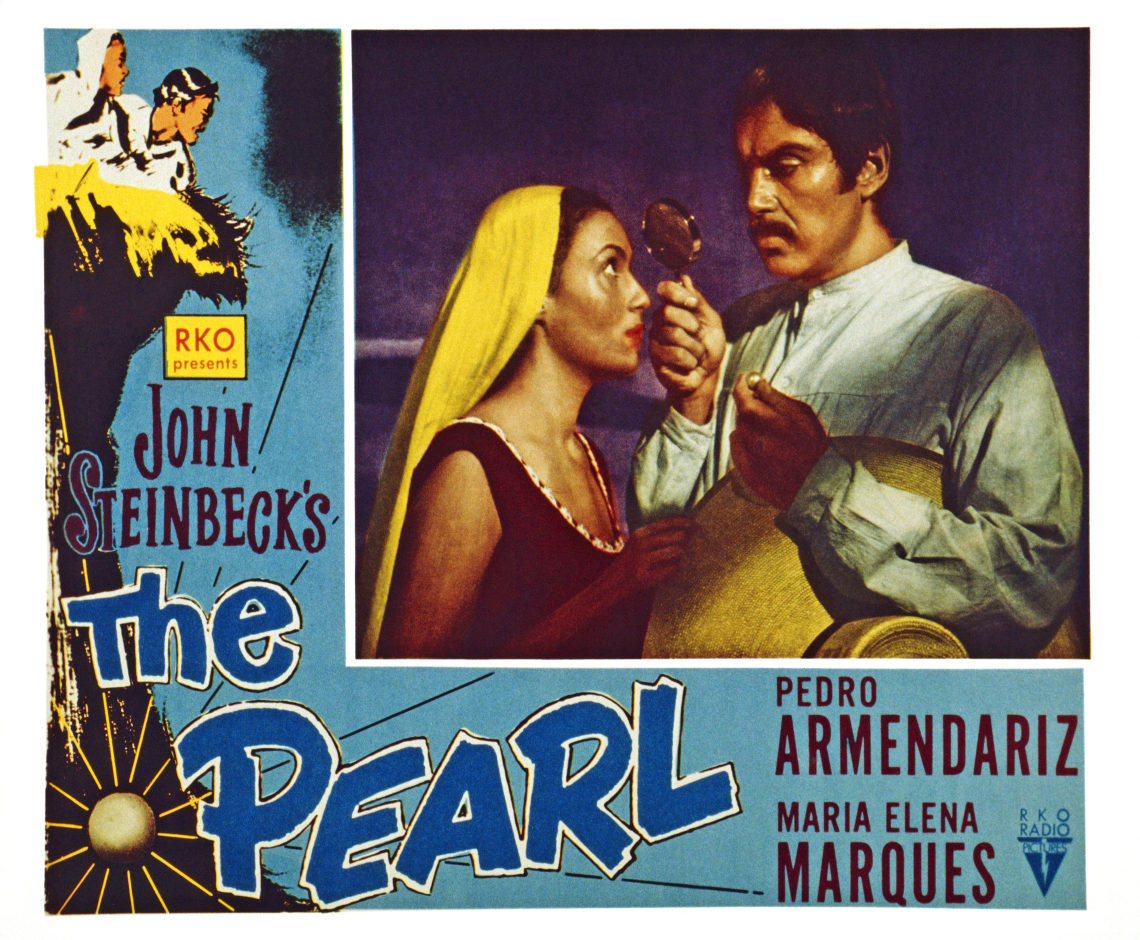When Mexican American director Gregory Nava was immersed in the making of his 1983 film El Norte, he could never have imagined that the harrowing drama about Central American immigrants crossing the border would become a classic and one of the most powerful depictions of the Latino experience in American film.
“When you’re making a movie, you don’t really know what’s going to happen with it — then it takes a life of its own,” reflects Nava from his home in New Mexico. “The impact of El Norte was overwhelming. It won prizes all over the world. Most importantly, it was used by the Mayan community to lobby Congress about granting Central American refugees protective status — something that finally happened in 1986.”
In 1995, El Norte was picked up for preservation by the Library of Congress’ National Film Registry, one of 13 Latino-directed movies on its current list. The registry, an effort that began in 1989 with the goal of safeguarding and honoring films deemed culturally, historically or aesthetically significant, includes professional and amateur movies and documentaries released between 1891 and 2010. Up to 25 titles by filmmakers of every background are added to the list every year, and a thorough representation of the Latino experience in film is one of the registry’s current priorities.
“We make a conscious effort to include films that mirror the experience of different cultures, created by women and people of color,” explains Stephen Leggett, program coordinator of the National Film Preservation Board. “Unfortunately, Latino directors didn’t have as much of an opportunity to make movies until the last couple of decades. It’s getting better now. In the meantime, we try to go back in history and find those hidden gems. The process of preservation may be costly, but it is very important for a nation to safeguard its heritage by not only preserving the famous films, but also home movies and documentaries, as they provide a record of a specific time and place in this country.”
A range of Latino films
Selecting the films is a complex process. First, suggestions are solicited from the general public. A board comprising 44 members — archivists, actors, directors — goes through a few voting rounds to narrow down the list. Librarian of Congress Carla Hayden then makes the final selection.
“It’s hard to get those Latino-themed films in there,” Nava says. “Out of the 800 titles in the registry, only a handful have Latino themes. I served on that committee, and I’m very proud of having participated.”
The current list of Latino films in the registry range from Robert Rodriguez’s low-budget action masterpiece El Mariachi (1992) and Patricia Cardoso’s soulful dramedy Real Women Have Curves (2002), to Luis Valdez’s rollicking Ritchie Valens biopic La Bamba (1987) and Lourdes Portillo’s radical documentary The Devil Never Sleeps (1994), in which she investigates the death of her uncle in Chihuahua, Mexico, under suspicious circumstances.
“I thought it was wonderful that they added a documentary to the registry,” says Portillo, who received news of the movie’s selection in 2020. “In the end, The Devil Never Sleeps is about the truth. That’s been my lifelong mission, to make documentaries that speak about reality in a truthful manner. I wanted people to see what it’s really like to be part of a Mexican family.”
A title that reflects the close relationship that once existed between American film and the golden era of Mexican cinema is The Pearl, the 1948 masterpiece directed by Mexico’s visionary helmer Emilio Fernández. Based on a novella by John Steinbeck — who also cowrote the screenplay — and starring Pedro Armendáriz and María Elena Marqués, the movie boasts stunning black and white camerawork by famed Mexican cinematographer Gabriel Figueroa. The Pearl was shot concurrently in both English and Spanish, a somewhat similar case to the iconic Drácula of 1931.
According to Nava, adding this paradigm of classic filmmaking to the list wasn’t as easy as one would expect.
“I asked them why Lawrence of Arabia was in there, since it’s an English movie, and they told me that it qualified because it was funded by an American studio,” he recalls. “Similarly, The Pearl was bankrolled by RKO Studios, at a time when Rockefeller was pushing for a positive portrayal of Mexico and Latin America in general. Steinbeck wrote The Pearl envisioning Emilio Fernández as the director, so I’m very proud that we got it on the list.”
Many stories to tell
The registry has been diligent about recognizing Nava’s work. Two more of his films, My Family (1995) and Selena (1997), have been nominated for preservation although they have yet to make it on the list. That said, most Latino filmmakers working in the U.S. agree that their work deserves wider exposure.
“When The Devil Never Sleeps came out, I thought it would merely enjoy a certain amount of success among the very people it represents,” explains Portillo. “My work as a filmmaker was always ignored and excluded.”
“We have been painfully overlooked as a community, and it isn’t only the movies,” adds Nava. “I’m talking about education, the literature taught in the school curriculum. There are 60 million Latinos living in the U.S., and our contribution to global culture has been diminished. The time has come for us to fight to have our rightful place.”
The National Film Preservation Board’s Leggett believes that the increased number of Latino works added to the list can help the cause.
“People of color struggled so much to get their films made,” he says. “The fact that they came up with such great work is nothing short of remarkable. We must recognize that.”
“It’s very important that we leave a mark,” emphasizes Portillo. “As a Mexican and a Latina, it makes me very happy to know that mainstream audiences can begin to internalize the experiences of other people. It’s good to know we’re representing ourselves in cinema.”
Like Portillo, Nava is still busy developing several Latino-themed productions. He sees the present as a moment of opportunity.
“We have so many stories to tell,” he says with a smile. “As Latino filmmakers, our mission is to bring the heart and soul of our culture to the audience, so that people can see who we really are. With movies, you can bridge art and commerce. You can make a profit but still change people’s minds.”
Films by Latino Directors in the National Film Registry: 1989-2020
The Library of Congress’ National Film Registry is dedicated to safeguarding and honoring films deemed culturally, historically or aesthetically significant to the United States. Films by Latino directors included in the egistry to date include:
Title Year of Release
- Real Women Have Curves (2002)
Directora: Patricia Cardoso - The Pearl (1948)
Directora: Emilio Fernández - Fuentes Family Home Movies Collection (1920s-1930s)
Director: Antonio Rodríguez Fuentes - Please, Don’t Bury Me Alive! (1976)
Director: Efrain Gutiérrez - Stand and Deliver (1988)
Director: Ramón Menéndez - El Norte (1983)
Director: Gregory Nava
- The Revenge of Pancho Villa (1930)
Director: Félix Padilla - The Devil Never Sleeps (1994)
Director: Lourdes Portillo - El Mariachi (1992)
Director: Robert Rodríguez - I Am Joaquin (1969)
Director: Luis Valdez - La Bamba (1987)
Director: Luis Valdez - Zoot Suit (1981)
Director: Luis Valdez
Ernesto Lechner is a contributing writer who covers music, film and culture. A frequent contributor to the Latin Grammy Awards, his work has also appeared in the Los Angeles Times, Chicago Tribune, Rolling Stone, and Billboard, among other major publications.
Also of Interest
https://ift.tt/3DijLtN
Film
Bagikan Berita Ini
















0 Response to "Latino Movies Rise in the National Film Registry - AARP"
Post a Comment